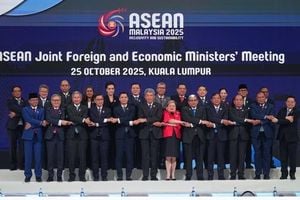Development of Martini-compatible coarse-grained models of polyethyleneimine to improve pulmonary gene delivery systems.
Recent advancements have led to the development of coarse-grained (CG) models for polyethyleneimine (PEI), providing enhanced abilities for the development of pulmonary gene delivery systems. These novel models work within the recognized Martini framework, focusing on increasing the effectiveness of gene therapies for various respiratory diseases.
Pulmonary diseases contribute significantly to the global health burden, necessitating advanced therapeutic methodologies. Pulmonary gene delivery, by directly introducing genetic material to the lungs, presents opportunities to revolutionize treatments for conditions such as cystic fibrosis and lung cancer. Challenges such as the complex lung architecture and the presence of pulmonary surfactant hinder effective delivery, requiring innovative strategies to navigate these barriers and achieve efficient gene transfer.
PEI has emerged as one of the foremost candidates among non-viral carriers due to its capability to condense nucleic acids effectively, offering versatile gene delivery solutions. The CG models developed within this study aim to optimize PEI’s interactions with key components of the pulmonary environment, such as nucleic acids and surfactant proteins, enhancing their overall performance. Researchers have confirmed the compatibility of these models with various molecular interactions, laying groundwork for future applications.
Using large-scale molecular dynamics simulations allows researchers to efficiently screen gene carriers and understand the mechanisms involved during pulmonary delivery. The research's data-driven methodologies have shown promise for refining PEI's traditional formulations, indicating improved efficacy through lipid substitutions and other molecular modifications.
Comparative analyses of potential mean force curves—between CG models and all-atom simulations—present solid evidence supporting the accuracy of the new models. These findings not only corroborate the viability of CG simulations for elucidative research but also highlight advancements achievable through systematic parameterization of non-bonded interactions between PEI and other molecular domains.
Researchers delineated the distinctive advantages of using lipid-substituted PEIs, indicating potential for enhanced transfection rates and targeted delivery methodologies. This development offers substantial benefits by potentially reducing cytotoxicity and improving biodegradability, along with superior stability of the gene delivery constructs.
Building on these findings, the CG models for both native PEI and its lipid-modified correspondent, PEI-CA, creates new opportunities for rational design of gene delivery systems. The application of CG modeling presents significant advancements, rendering PEI versatile for application not only within pulmonary therapeutics but beyond, including intravenous gene delivery systems where precise programming of molecular interactions could optimize efficacy and reduce adverse reactions.
These developments serve as significant stepping stones toward the refinement of therapeutic strategies for managing respiratory diseases, fostering the potential for widespread implementations of gene therapies. Further investigations are anticipated to refine these models and expand the exploration of interactions with key biological components—efforts which could pave the way for systematic advancements across various biomedical applications.



